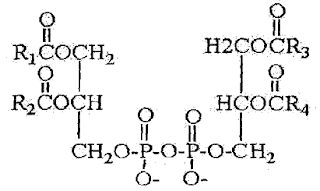Lipids are not a polymer of repeating nonnumeric unit similar to polysaccharide or protein. Lipids are compound soluble in ether or benzene or in chloroform but only sparingly soluble in water. There are several basis of lipid classification such as their hydrolysis product.
Classification on the Basis of Chemical Nature
On the basis of chemical nature lipids are classified into four types.
i) Simple lipids: These are esters of fatty acids with various alcohol. Examples: Fats, oil and waxes.
 |
| Structure of Ester |
ii) Compound lipids: These are esters of fatty acids containing groups in addition to an alcohol and fatty acids. Examples: Phospholipids, Glycolipids, Lipoproteins.
 |
| General structure of a compound lipid |
iii) Derived lipids: These are derived from above mentioned phospholipids, glycolipids etc.
iv) Miscellaneous: It includes Sterol, Tapenes etc.
Another classification of fatty acids are: Essential fatty acids and Non-essential fatty acids. Non-essential fatty acids are those which body can synthesize itself or their inclusion in diet is not necessary whereas, essential fatty acids are those which have to be obligatorily included in diets and are able to cure the diseases caused by the diet deprived of essential fatty acids. The number of essential fatty acids are three. They are Linoleic, Linolenic and Arachidonic acid. The linoleic can be converted to linolenic and arachidonic acids and therefore, the presence of linoleic acid in diet can manage other two essential fatty acid.
Classification on the basis of Saponification
 |
| Classification of lipids on the basis of Saponification |
i discovered this weblog after a long time that's clearly beneficial to allow understand unique techniques. i'm going to adopt the ones new issue to my career and thankful for this assist. call my lost phone
ReplyDelete